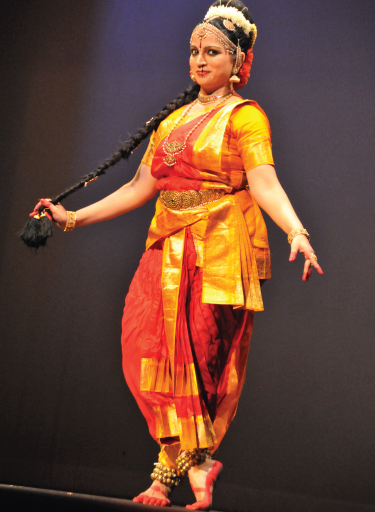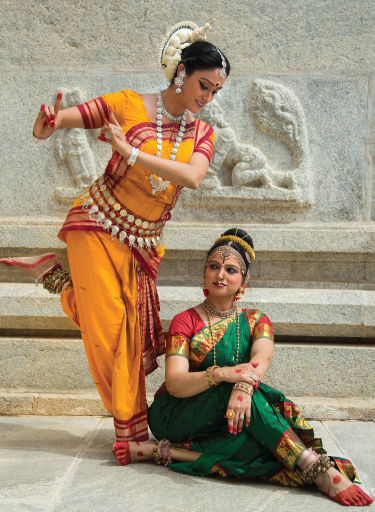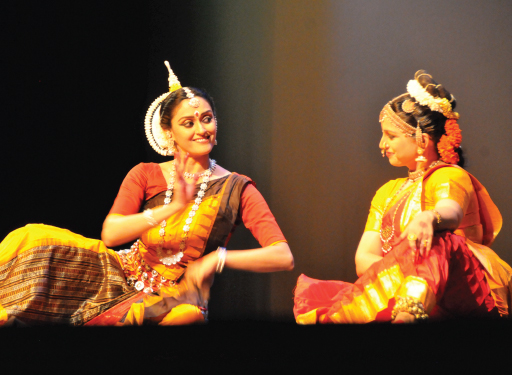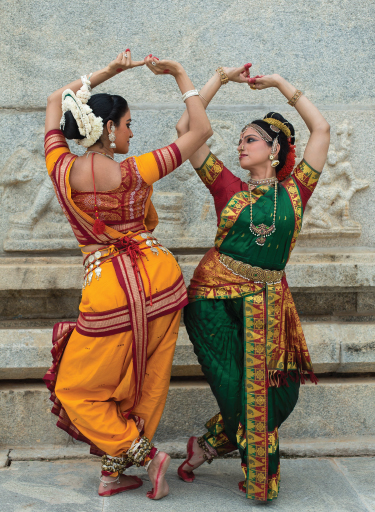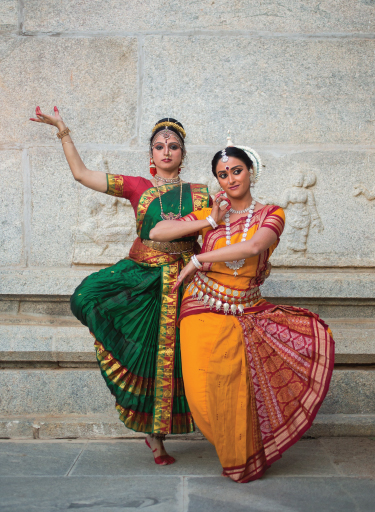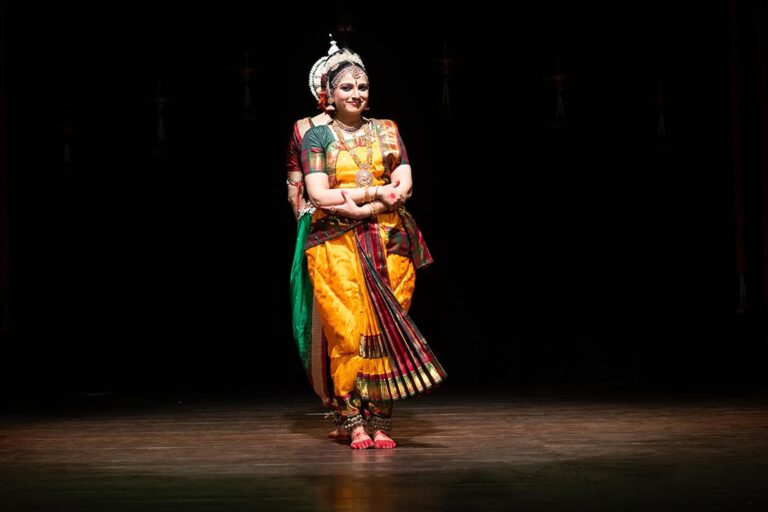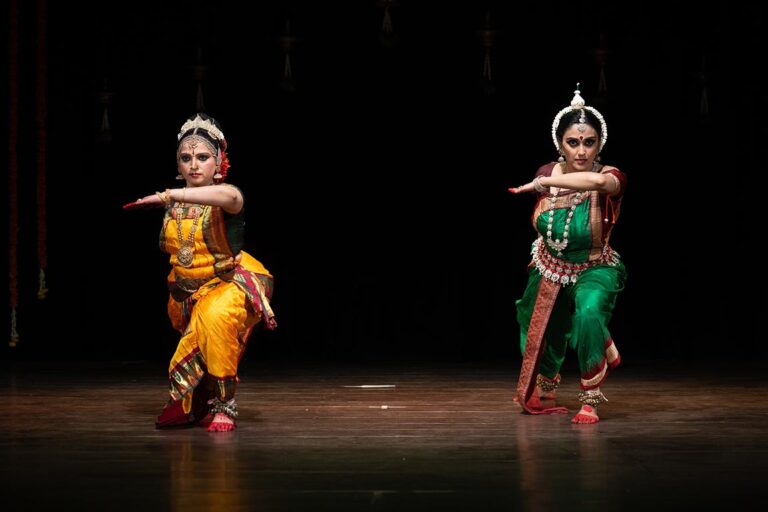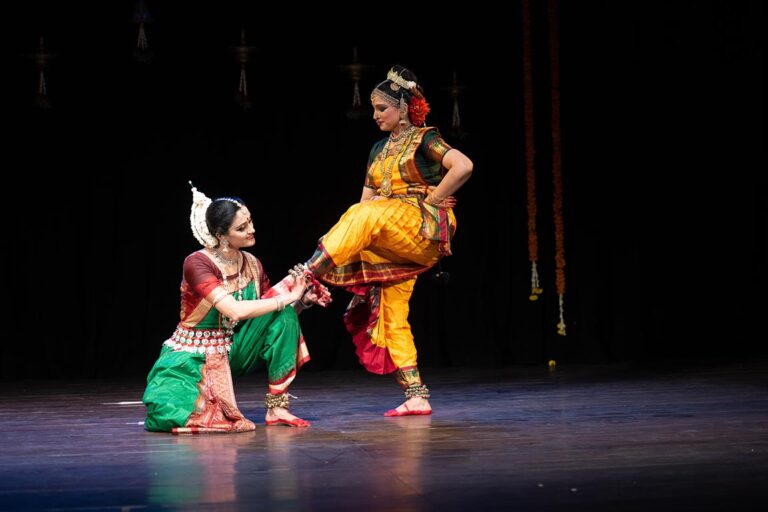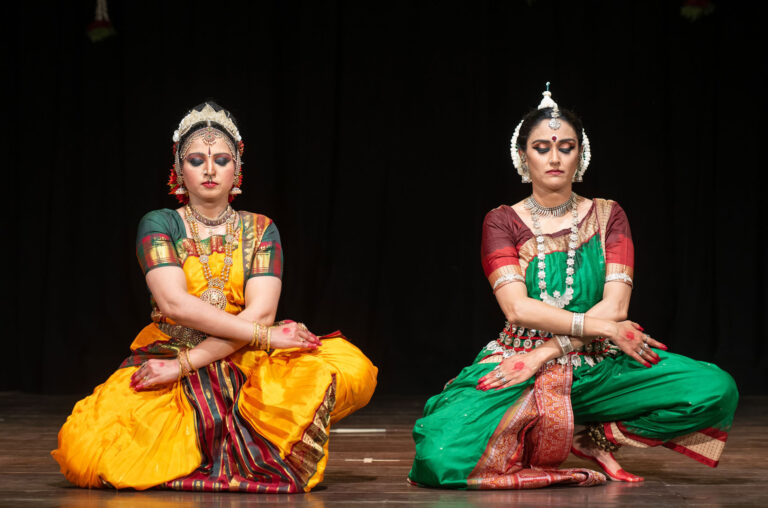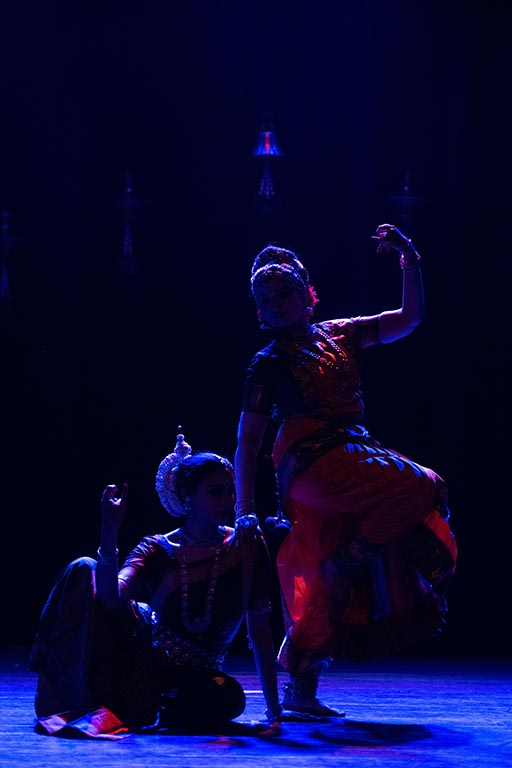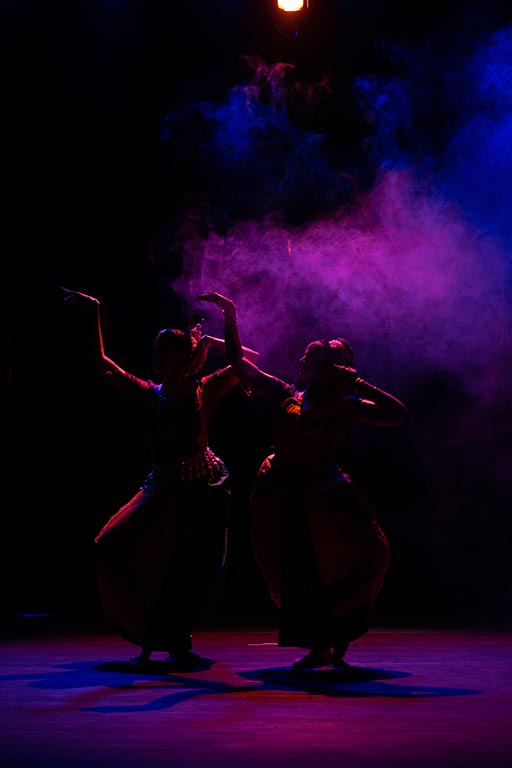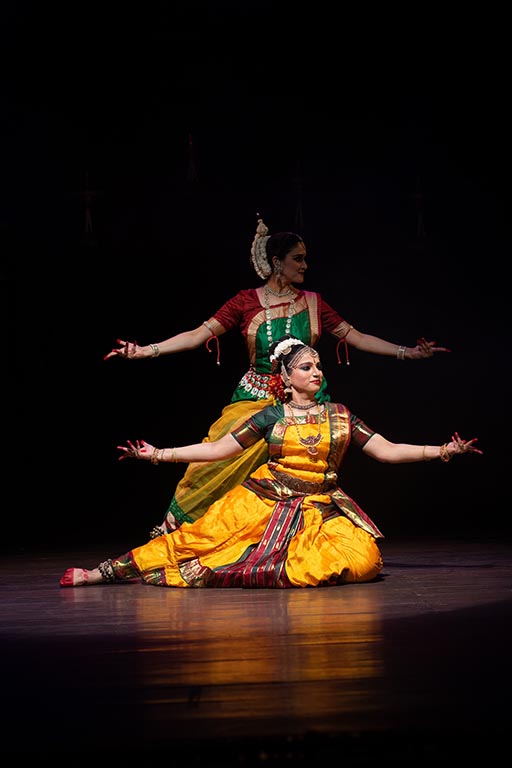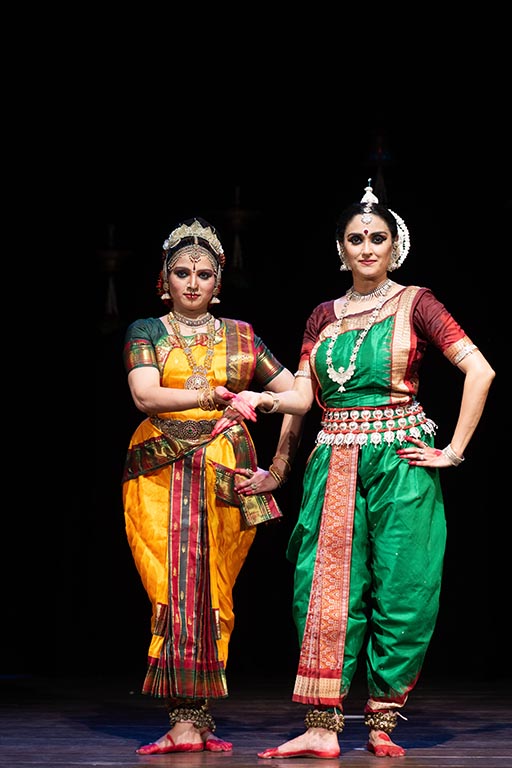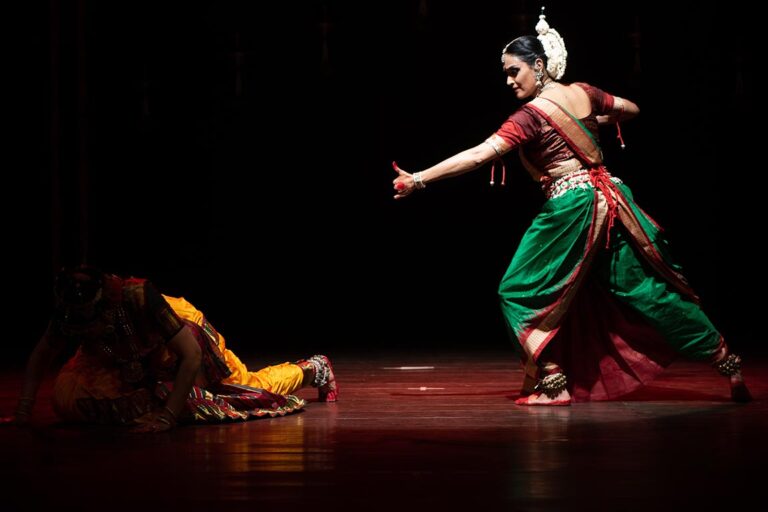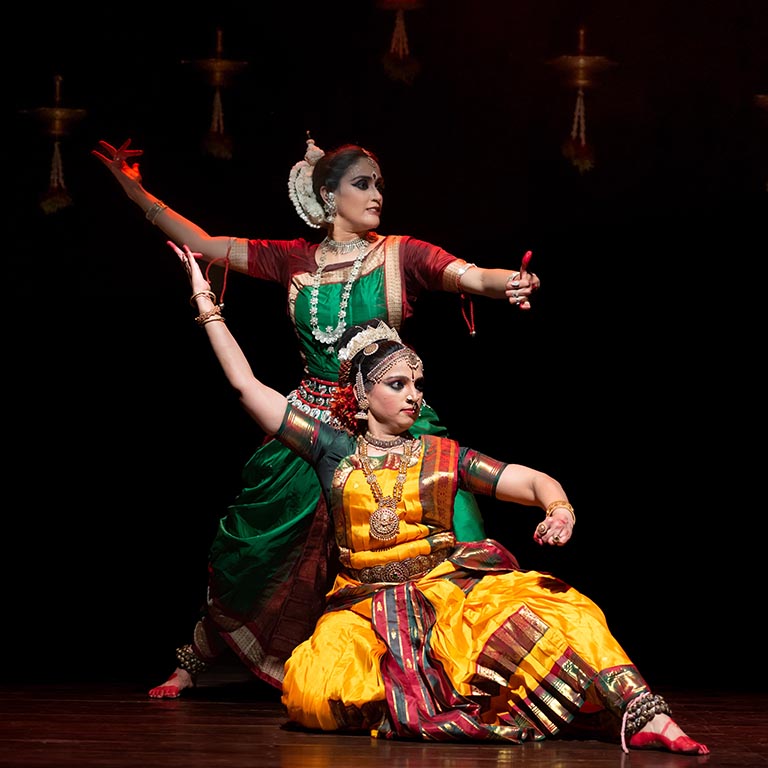COLLABORATIVES
To bring two distinct forms of art together onto the same platform is an immensely satisfying endevour for an artist. Collaborations between like-minded artists bring out interesting ideas and perspectives and the act of transcribing that onto movement and music is a journey in its own right.
Srividya Angara has worked with other seasoned artists in a bid to achieve this objective. 2017 saw the unveiling of SAMAAGATI – an Odissi-Kuchipudi jugalbandi that toured the USA that Spring. Srividya collaborated with Odissi dancer Shubha Nagarajan to create a moving juxtaposition of the two graceful dance forms. Debuting in one of most vibrant cultural cities of the world – New York City, Samaagati moved onto Greenbelt (MD), Tallahassee, Cary, San Rafael and Irvine. In India, Samaagati was presented at ‘Swartaal’, the signature classical music and dance festival of renowned theatre space – Jagriti, in Whitefield, Bangalore. It was also chosen to be presented at the prestigious Indian Institute of Technology, Mumbai as part of its Biological Engineering Society Conference. Irrespective of where it was performed, Samaagati walked away with warmth and accolades from a moved audience.
Panchanayika was another group collaborative effort that Srividya was a part of. Conceptualized by Kuchipudi dancer Smt. Deepa Shashindran, this hour-and-a-half long presentation featured five Kuchipudi dancers, each portraying a nayika from mythology. Srividya played the role of Rukmini, consort of Lord Krishna in this and debuted her own choreography along with a traditional piece in this presentation.
SamaAgati
Sanskrit for ‘taking steps together’, Samaagati brings a collaborative effort between dancers Srividya Angara Sinha and Shubha Nagarajan as they share the stage and energy in presenting the very graceful and lyrical dance forms of Kuchipudi and Odissi.
Odissi, the lyrical and sensuous dance form from Odisha, in the eastern part of India is characterized by fluidity of upper torso, graceful gestures while displaying strength in footwork. Its abhinaya or expressional body of work is mainly poised on 12th century poet Jayadeva’s epic work, Geeta Govinda. Odissi has its seminal roots in the temple dancing rituals or Devdasi traditions. Post Indian independence in 1947, great effort was made by eminent Gurus like Guru Debaprasad, Guru Kelucharan Mohapatra, Guru Pankaj Charan Das and others to revive this dance style. It is now a well established and codified classical dance form.
Kuchipudi is the state dance style of Andhra Pradesh in southern India. Marked by dramatized expression and intricate footwork, this ancient dance-drama tradition came into being around the 15th century AD when an ascetic by name Sri Siddendra yogi brought this form to the forefront with his magnum opus – the Bhaamaakalaapam.
Early 19th century saw the inclusion of solo repertories and women into the hitherto male-dominated dance form. Great teachers have, through the centuries, made it their lives’ work to promote and preserve Kuchipudi through their untiring efforts.
Shubha Nagarajan and Srividya Angara Sinha, graded artists with Doordarshan – India’s national television network, set out to juxtapose these ancient and celebrated dance styles that share between them a similarity in lightness of the technique, while remaining discrete on their physical extent within the plane of movement. They also bring to fore the immense scope of expression that Kuchipudi and Odissi have, and when presented together, it gives the audience a clear view of how close and yet how distinct the two styles are. Samaagati will showcase traditional and original choreographies in both styles, with the dancers coming together to share stage for a finale.
Press and Reviews
Meenakshi
This new production from CITSABHA COLLECTIVE features the glory of the Goddess Meenakshi of Madurai. The warrior-goddess has an interesting tale of birth and marriage and subsequent consecration as the Divine Mother. Her soft stance as the Universal Mother juxtaposes her repute as one unconquerable in the battlefield. And it is this journey that is explored and exhibited in the Meenakshi Pancharatnam – a composition of Jagadguru Adi Sankaracharya.
Radiant like a 1000 suns, resplendent in beautiful attire, her face glows like a moon. She is worshipped by Saraswati and Lakshmi. Residing on the left half of Shiva, mother of Shanmukha and Vighnaraja, she is in the centre- the bindu of the Shri Chakra. This dusky beauty is Narayana’s sister, and a rasika of music.
Oh! Meenakshi, I bow to thee, the ocean of compassion.
While the verses themselves delineate the characteristics of the Mother Meenakshi, the musical preludes to each verse paint a picture of her life from birth to her marriage with Lord Shiva as Sundareshwara. Hers was no ordinary birth. The Pandya king Malayadhwaja and his wife Kanchanamala perform a yagnya to beget a son. But from the sacred fire steps out a 3-year-old girl child, and what’s more, she bears three breasts upon her person. The dismayed King is consoled by his queen who impresses upon him that it is their privileged destiny to be parents to the Divine Mother, and to raise Her to be a ruler unmatched in valour.
From being a little girl with beautiful eyes shaped like a fish, we see her blossom into an intelligent young adult, quick to grasp complex lessons in warfare that are taught by her guru. Armed now with knowledge and various weapons, the brave and intrepid Meenakshi sets out to conquer all. And she does! However, it is when she reaches Kailasa, that she encounters her match – in the handsome form of Sundareshwara. Lo and behold! The third breast now disappears fulfilling an age-old prophecy wherein her physical anomaly would dissolve upon meeting her consort. And what was always a bloody war, this time culminates in love and marriage, with Meenakshi asking for Shiva’s hand in marriage.
The warrior-queen is now the Divine Mother of the Universe. The minds of the yogi and the bhaktha both seek Her as She blooms in the lotus of their hearts. The parrot that rests so lightly on her shoulder is representative here, of Kaala, -Time , and in an infinite cycle where matter and energy are in an ever-shifting state of flux, She alone is the Unchanging Principle, standing tall and strong, ever ready to rush to the aid of those who call upon Her.
The concluding meditative music sees a new movement technique added in – that of Kalaripayattu.
We are thankful to Kalari guru Sri Ranjan Mullarat for his inputs. The music for Meenakshi has been composed by Vid. Shri Praveen D Rao. Concept and choreography are by Shubha Nagarajan and Srividya Angara Sinha.
